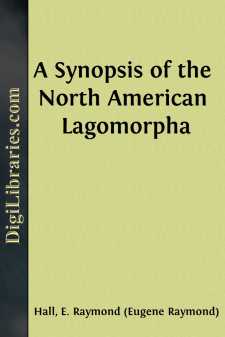Categories
- Antiques & Collectibles 13
- Architecture 36
- Art 48
- Bibles 22
- Biography & Autobiography 813
- Body, Mind & Spirit 142
- Business & Economics 28
- Children's Books 14
- Children's Fiction 11
- Computers 4
- Cooking 94
- Crafts & Hobbies 4
- Drama 346
- Education 46
- Family & Relationships 57
- Fiction 11829
- Games 19
- Gardening 17
- Health & Fitness 34
- History 1377
- House & Home 1
- Humor 147
- Juvenile Fiction 1873
- Juvenile Nonfiction 202
- Language Arts & Disciplines 88
- Law 16
- Literary Collections 686
- Literary Criticism 179
- Mathematics 13
- Medical 41
- Music 40
- Nature 179
- Non-Classifiable 1768
- Performing Arts 7
- Periodicals 1453
- Philosophy 64
- Photography 2
- Poetry 896
- Political Science 203
- Psychology 42
- Reference 154
- Religion 513
- Science 126
- Self-Help 84
- Social Science 81
- Sports & Recreation 34
- Study Aids 3
- Technology & Engineering 59
- Transportation 23
- Travel 463
- True Crime 29
A New Subspecies of Microtus montanus from Montana and Comments on Microtus canicaudus Miller
Description:
Excerpt
IN 1949, for the Museum of Natural History of the University of Kansas, Mr. John A. White collected two specimens of the species Microtus montanus in the Bitterroot Valley of Montana, that did not fit the description of any named subspecies. These were laid aside until we could examine the additional specimens from Montana in the Biological Surveys collection in the United States National Museum, some of which previously had been reported by Bailey (N. Amer. Fauna, 17:31, June 6, 1900) under the name Microtus nanus canescens Bailey [=Microtus montanus canescens]. Our examination reveals that the animals from the Bitterroot and Flathead valleys belong to an heretofore unrecognized subspecies which is named and described below.
Microtus montanus pratincolus new subspecies
Type.—Female, adult, skull and skin, No. 34004, Univ. Kansas, Mus. Nat. Hist.; from 6 mi. E Hamilton, 3700 ft., Ravalli County, Montana; obtained on August 14, 1949, by John A. White; original number 477.
Geographic distribution.—Flathead and Bitterroot valleys of western Montana.
Diagnosis.—Size small for the species (see measurements). Color: Essentially as in Microtus montanus nanus. Skull: Small, slender, and comparatively smooth; rostrum moderately depressed distally; nasals moderately inflated distally and extending posteriorly not quite to tips of premaxillary tongues; nasals usually truncate posteriorly, but rounded in some individuals; premaxillary tongues terminating posteriorly in a short medial spine; zygomatic arches lightly constructed and usually more widely spreading posteriorly than anteriorly; interparietal comparatively long and terminating in a small, but distinct, medial spine, otherwise approximately rectangular in shape; exposed parts of upper incisors short and, for the species, only slightly procumbent; molar dentition weak and, in most specimens, especially so posteriorly; tympanic bullae large and well inflated, especially ventrolaterally; basioccipital narrow owing to the encroachment of the tympanic bullae.
Comparison.—Among named forms, Microtus montanus pratincolus most closely resembles Microtus montanus nanus. The geographic range of M. m. nanus adjoins that of M. m. pratincolus on three sides; there is no conspecific subspecies adjoining the range of M. m. pratincolus on the north. From M. m. nanus, M. m. pratincolus differs as follows (measurements are all of males, those of M. m. nanus being of nine topotypes and near topotypes from central Idaho): size smaller (149 mm. as opposed to 165), tail shorter (37 as opposed to 39), hind foot shorter (19 as opposed to 20), upper molar series shorter (expressed as a percentage of basilar length, 25.5 as opposed to 26.3), mastoidal region broader (expressed as a percentage of basilar length, 48.6 as opposed to 46.7), braincase slightly more vaulted (depth of braincase expressed as a percentage of basilar length, 31.3 as opposed to 30.4) and more inflated laterally; tympanic bullae more inflated, this inflation being the most conspicuous difference between the two subspecies. The tympanic bullae of M. m. pratincolus have approximately a fourth more volume than those of M. m. nanus.
Remarks.—Northwardly in the Bitterroot Valley, specimens of M. m. pratincolus morphologically approach M. m. nanus, especially in the reduced degree of inflation of the tympanic portion of the bullae. On geographic grounds we think that the geographic range of M. m. pratincolus extends southward to the southern end of the Bitterroot Valley; we have not seen specimens from that area. Although we have not examined the specimen reported upon by Davis (Murrelet, 18:26, September 4, 1937) from Canyon Creek, "a few miles west of Hamilton", Montana, we think that it will be found to belong to M....












